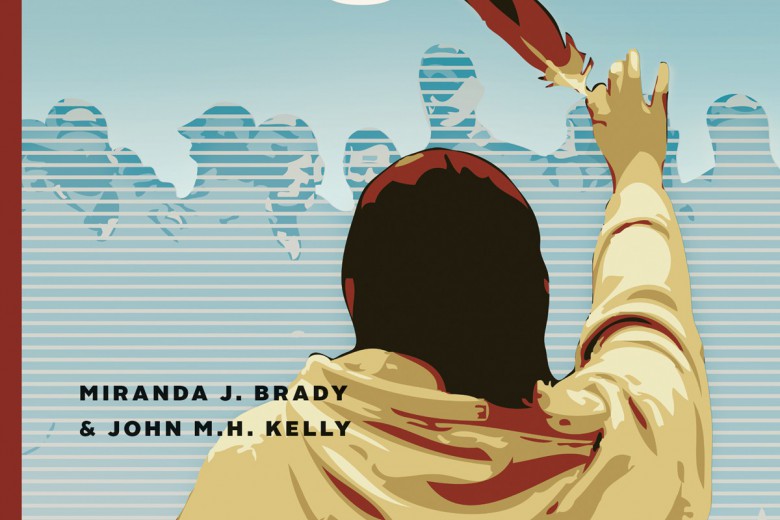
After World War II, muckraking journalist Edward R. Murrow asked Dave Schoenbrun, a bright young interpreter at Allied Force Headquarters, what his post-war plans were. Schoenbrun expressed his desire to return to teaching high school French, to which Murrow responded: “Kid, how would you like the biggest classroom in the world?” To Murrow, the most renowned figure in U.S. broadcast journalism, education was the primary purpose of news reporting.
Unfortunately, the media in North America has never really lived up to Murrow’s vision of the media-as-classroom. The current media system in Canada – largely based on the business model of ad-based corporate journalism – does not meet the public need for unfiltered information, discussion and debate. It does not adequately address the social, ecological and economic challenges facing communities across the country.
At this time of great change, when communities need access to democratic media more than ever, media outlets across the board are facing major cuts and layoffs, with the prospect of local news outlets shutting down across the country. Both CTV and Canwest have launched a public campaign to save local (corporate) TV and Canwest is requesting a major bailout from the government. But all is not doom and gloom. While the crisis in corporate journalism is likely to deepen our democratic deficit in the short term, it also represents an opportunity to experiment with more informative, educational and democratic forms of media that can connect and empower communities and hold systems of power to account.
Big Media, bad business
Over the past two decades, the business model of corporate journalism in Canada has been driven primarily by two core imperatives: to grow as big as possible as fast as possible – a handful of mega-corporations now own most newspapers, local TV stations, and other media outlets across the country – and to slash editorial budgets and local coverage, treating each outlet as a cookie-cutter franchise under centralized control, with occasional touches of local flavour.
As a result of these trends, media ownership in Canada is now concentrated in fewer hands than in almost any other country in the industrialized world. At present, only three companies (Canwest, CTVglobemedia, and Quebecor) own most of the media in Canada with a few others (Rogers, Corus/Shaw and Torstar) controlling much of the rest. Since 2005, almost all private Canadian television stations have been owned by these few national media conglomerates. Formerly, until the mid-1990s, the Canadian Radio-television and Telecommunications Commission (CRTC) had largely restricted media consolidation to smaller markets whose populations could not economically support multiple television stations competing for advertising revenue. However, when the CRTC started to permit ownership of multiple television and radio stations, control of the media quickly passed into fewer and fewer hands.
The same corporations that have swallowed up television and radio stations across the country also own most of the newspapers in Canada. Between 1990 and 2005, the number of independently owned daily newspapers in Canada fell from 17.3 per cent in 1990 to just 1 per cent. Since 2007, four corporations have controlled more than 70 per cent of Canada’s newspaper circulation. The best example of the corporate chokehold on media can be seen in Vancouver, which has one of the most concentrated media markets in North America: Canwest controls 70 per cent of the entire market, including print, TV and radio.
Whose news?
The Starbucksification of Canadian news media has had drastic and devastating consequences for the quality and diversity of Canadian journalism. In 2007, the Communications, Energy and Paperworkers Union of Canada (CEP) published a study entitled Voices from the Newsroom. The study’s findings included the fact that fewer than one in 10 journalists believe that their bosses value good journalism over profit. Forty-four per cent of journalists reported a decreased desire to stay in journalism. Journalists also felt that advertisers influence editorial decisions and that overall, the industry has worsened over the last decade. These sentiments were being expressed before the crisis in journalism entered its most recent and severe phase.
The business model of cookie-cutter, corporate, ad-driven media is failing. In the final quarter of 2008, Canwest reported a $33 million loss and a staggering $3.7 billion debt. In the past year, Canwest has cut over 1,000 jobs, is scaling back local operations, and is considering shutting down some local stations entirely. Collectively, Canwest, Torstar, Quebecor, and CTVglobemedia have cut over 1,300 jobs in the first three months of this year, on top of deep cuts made last year.
In addition to throwing journalists overboard to stay afloat, Canwest has asked the Canadian government for a bailout package with taxpayer dollars. Canwest and CTVglobemedia have also successfully lobbied the CRTC to introduce something they call fee-for-carriage, a media-funding scheme in which cable and satellite distributors will be required to pay commercial broadcasters a levy on monthly subscriptions. With every indication the distributors will simply pass this increased cost on to consumers, this means that soon the cable-subsidizing public will indirectly be paying for for-profit network TV.
New media isn’t the problem
While Big Media executives blame the crisis on the slumping economy and the displacement of audiences to new online media, the real cause is the virtual monopoly on Canadian media enjoyed by three major corporations and the compulsion of those companies to cut costs and extract profits at the expense of quality programming and journalism.
Giving so few companies so much power to decide what is or isn’t “news” has a toxic impact on the health of Canadian culture. Big Media have abdicated their responsibility to the Canadian people to provide quality reporting and to connect people with their communities – in short, to produce public-interest journalism. In a February press release, Leonard Asper, Canada’s most powerful media baron, tellingly dismissed the likely closure of TV stations in Montreal, Hamilton, Red Deer, Kelowna, and Victoria, declaring “these stations are not core to our television operations going forward… . We believe that our efforts are best focused on the areas of greatest return.” As Asper’s comments suggest, Canada’s media outlets are run first and foremost as businesses rather than as institutions essential to the proper functioning of a democracy.
Quebecor, one of the country’s largest media conglomerates, recently locked out workers from its most profitable newspaper, the Journal de Montréal. The locked-out workers’ union estimates that Quebecor drew in $50 million in profits from the newspaper in 2008. Why lock out workers in a profitable business? Easy. While Quebecor may be profitable, it can be more profitable if management succeeds in rolling back worker compensation and benefits.
When a media company is focused on maximizing profit, it will be inclined to continually push for more, lower-quality output by fewer journalists. The cuts to local media have made for more superficial, less locally accountable media, which is likely to be less relevant to audiences. The problem with journalism in Canada, therefore, isn’t so much the economic slowdown or the spread of new media – these just exacerbate a trend that was already underway. The real culprits are, first, Big Media’s propensity to treat news operations as just another business, and second, the government’s failure to take its regulatory role seriously.
Rejuvenating communities, reinventing journalism
Building educated, engaged and sustainable communities requires access to accurate information and space for open dialogue. As corporate media step back from even token efforts to fill this role, communities have begun to organize in support of alternative media models. Various community-supported journalism initiatives have sprung up across the country. Several communities, including Vancouver, Halifax, Kelowna, and Thunder Bay, have come together either to create new independent media outlets or to save existing news stations – both public and private.
Foundations, labour groups, NGOs and individuals have also been playing a role in renewing journalism by contributing to public trusts or charitable funds that support innovative journalism projects. For example, rabble.ca, an independent, non-profit online news organization, is funded by support from individuals as well as advertising by NGOs, unions and foundations. TheTyee.ca, an independent, online, B.C.-based news site has developed a charitable investigative journalism fellowship fund that supports investigative and solutions-based journalism.
Journalist-driven news gathering
Filling the current void in journalism requires support for initiatives where journalists themselves are taking over media production. The Dominion, a monthly newspaper and online news site published by a network of independent journalists from across Canada, is jointly owned and democratically controlled by its readers, contributors and editors. The Dominion strives to provide accurate and critical coverage that is missing from mainstream media. It was established in 2003 and its members have since formed a media co-operative called the Media Co-op, a national network of local media co-operatives committed to democratic, grassroots coverage. The co-op was born out of the need for a broadly participatory media organization and is organized as a solidarity co-operative that represents the interests of its readers, contributors, and editors. It currently has over 100 sustaining members with two autonomous local chapters established earlier this year in Halifax and Vancouver. Two more are in the works in New Brunswick and Toronto.
Journalists are also taking more immediate action. When Journal de Québec media workers were locked out in 2007, they launched their own free daily newspaper, MédiaMatin Québec, distributing 40,000 copies every weekday until the lockout ended. When the workers at Journal de Montréal were locked out this past January, they quickly launched their own news website called RueFrontenac.com.
Communities across the country that are at risk of losing local stations have followed with interest the example of Hamilton, where a community-based initiative to save the local TV station could serve as a model for other regions. In February, Canwest announced its intention to sell off CHCH television (formerly known as CH Hamilton), the only local station for the Hamilton-Halton-Niagara region. If they weren’t able to find a buyer, Canwest was planning to shut down the local news station entirely, leaving about one million people without a local station. In response, employees and civic leaders organized to buy the station and run it as a community owned and operated non-profit governed by a board of directors made up of community leaders.
In late June 2009, however, Canwest agreed to sell its Hamilton and Montreal stations to Channel Zero Inc., an independent Canadian television broadcaster. Although this means that the Hamilton project will not come to fruition, according to Channel Zero’s vice president and general manager Cal Millar, they plan to be “anything but conventional” by broadcasting an all-news format during the day and movies at night. According to Millar, “It’s the tired practice of spending millions to acquire and simulcast U.S. programming – much of it quickly rejected by viewers – that really broke the big boys’ TV business model.” Although the all-news format of programming will come at a cost, the station will be directly serving its community and hopes to draw in more local advertising on that basis. While the community ownership model did not come to fruition in Hamilton, it remains to be seen whether or not the proposal will inspire other communities, such as Kelowna, who face similar challenges.
With great turmoil comes great possibility
The crisis of our media system in Canada is coming to a head. There is an historic opportunity in the 21st century to fulfill the educational potential of broadcast journalism that was never realized in the 20th century. Taking back media, creating new, sustainable models, and placing control back in the hands of communities will bring our newsrooms a few steps closer to becoming the classroom Edward Murrow envisioned.
In Murrow’s words, “We cannot make good news out of bad practice.”



_780_520_90_s_c1.jpg)


